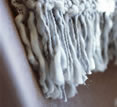SINGITA LEBOMBO
| THE NEW SAFARI


Singita Lebombo
Singita Lebombo takes its cues from nature’s finest engineers through a design concept inspired by the position and structure of nests, dens, eyries and lairs.
Text Mandy Allen
Photography Craig Fraser
Singita Lebombo takes its cues from nature’s finest engineers through a design concept inspired by the position and structure of nests, dens, eyries and lairs.
Text Mandy Allen
Photography Craig Fraser
Singita Lebombo exists as a delicate and almost invisible
form in what many refer to as the Kruger National Park’s most spectacular
area. Set on a long, elevated site in the southeast region with aspects across the
rolling Lebombo mountains, wildlife-abundant savannah and Nwanetsi river,
the lodge is arranged in a succession of 15 private lofts and a public
pavilion that clasp the side of the cliff like eagles’ nests. Modular
structures fashioned from simple materials – glass, steel and
wood – are devoid of familiar architectural associations, the large vertical planes
of glass exploring the idea of a boundary-less space
and affording the privileged visitor dramatic encounters with both
heaven and earth.
Dwelling between the earth and the sky the Singita Lebombo stands as the revolutionary tour de force of contemporary safari style. The jewel in the crown of the Singita group, Singita Lebombo successfully deviates from the bush boutique hotel vernacular with an architectural approach that goes beyond the traditional ideas of the built environment. In a similarly freethinking manner, Singita Lebombo’s interior design, rather than tying itself to the African past, confidently explores an African future.
‘We wanted to communicate an awareness of dwelling between the earth and the sky,’explains Andrew Makin of OMM Design Workshop who, with partner Janina Masojada and regular collaborator Joy Brasler as well as Boyd Ferguson, was responsible for the architectural direction of the lodge. ‘The customary way of making an environment that respects its place in the African wilderness is to dig in and make it heavy with thatch, earth walls, screed floors. Our approach was to explore other non-physical, ethereal components of African consciousness.’ As well as responding to the cliff-face location, the team’s inspiration was the animal-made shelter and the manner in which nomadic people would set up temporary camp on the African plain.
Glass plays a pivotal role in achieving the architects’ aspirations of creating a sense of fluidity, transparency and impermanence. With the exception of the sala (outdoor pool pavilion) with its undulating changing-room wall, the structure has been limited to the most basic geometric form: steel-framed glass cubes are bolted to the cliff face and appear in the landscape as floating platforms. These glass boxes have been wrapped in ‘shawls’ of woven saligna-gum twigs that dapple the light and impart the effect of sleeping under a canopy of trees. The architecture allows for an astonishing degree of exposure to the immediate environment while still providing all the practical advantages of protection, comfort and privacy.
This idea has been taken further by keeping the outer canvas in the traditional olive green, while the interior canvas is a contemporary shade of mustard. The tents open up completely at the front and rear to allow air to flow through, to enhance the feeling of space and to connect the interiors with the tranquillity of the scene outside.
Dwelling between the earth and the sky the Singita Lebombo stands as the revolutionary tour de force of contemporary safari style. The jewel in the crown of the Singita group, Singita Lebombo successfully deviates from the bush boutique hotel vernacular with an architectural approach that goes beyond the traditional ideas of the built environment. In a similarly freethinking manner, Singita Lebombo’s interior design, rather than tying itself to the African past, confidently explores an African future.
‘We wanted to communicate an awareness of dwelling between the earth and the sky,’explains Andrew Makin of OMM Design Workshop who, with partner Janina Masojada and regular collaborator Joy Brasler as well as Boyd Ferguson, was responsible for the architectural direction of the lodge. ‘The customary way of making an environment that respects its place in the African wilderness is to dig in and make it heavy with thatch, earth walls, screed floors. Our approach was to explore other non-physical, ethereal components of African consciousness.’ As well as responding to the cliff-face location, the team’s inspiration was the animal-made shelter and the manner in which nomadic people would set up temporary camp on the African plain.
Glass plays a pivotal role in achieving the architects’ aspirations of creating a sense of fluidity, transparency and impermanence. With the exception of the sala (outdoor pool pavilion) with its undulating changing-room wall, the structure has been limited to the most basic geometric form: steel-framed glass cubes are bolted to the cliff face and appear in the landscape as floating platforms. These glass boxes have been wrapped in ‘shawls’ of woven saligna-gum twigs that dapple the light and impart the effect of sleeping under a canopy of trees. The architecture allows for an astonishing degree of exposure to the immediate environment while still providing all the practical advantages of protection, comfort and privacy.
This idea has been taken further by keeping the outer canvas in the traditional olive green, while the interior canvas is a contemporary shade of mustard. The tents open up completely at the front and rear to allow air to flow through, to enhance the feeling of space and to connect the interiors with the tranquillity of the scene outside.
If the architecture of Singita Lebombo is revolutionary, its interior design has been nothing less than trendsetting. The work of Boyd
Ferguson and Paul van den Berg of Cécile & Boyd’s, who were pivotal to the conception of Singita Lebombo’s look and feel from the
outset, the decor integrates the urban and the organic, the sophisticated and the rustic, the hi-tech and the handcrafted.
The tone is set by a largely neutral, sun-bleached palette that makes the already airy space seem even lighter and more diaphanous.
Like the architecture, the interior elements evoke the sensation of being close to the outdoors at all times: in the dining room guests experience the crunch of gravel underfoot; tea-light holders are made of ostrich egg shells; the shades of hanging lamps mimic the form of weaver nests; tactile wool rugs reference the dry bush grass; and round ottomans in the public lounge bring to mind the large boulders that flag the banks of the Nwanetsi. All this earthiness is contemporised by a selection of sleek, modern pieces, such as dining tables by South African furniture designer Haldane Martin. And to add a subtle hit of glamour, Ferguson has installed clear glass floor-standing lamps of his own design that when lit at night ‘are suggestive of a bush fire,’ and during the day take on the form of ‘ice or falling rainwater.’
The 750-square-foot guest suites are decorated in the same style as the public spaces, with the addition of a series of gauzy drapes and heavier curtains that allow occupants to configure the bedroom, sitting room and bathroom spaces as they prefer. ‘This, in combination with the glass, low-level furniture and latte screens,’ says Paul van den Berg, ‘makes it literally feel like you’re camping under the stars.’
Like the architecture, the interior elements evoke the sensation of being close to the outdoors at all times: in the dining room guests experience the crunch of gravel underfoot; tea-light holders are made of ostrich egg shells; the shades of hanging lamps mimic the form of weaver nests; tactile wool rugs reference the dry bush grass; and round ottomans in the public lounge bring to mind the large boulders that flag the banks of the Nwanetsi. All this earthiness is contemporised by a selection of sleek, modern pieces, such as dining tables by South African furniture designer Haldane Martin. And to add a subtle hit of glamour, Ferguson has installed clear glass floor-standing lamps of his own design that when lit at night ‘are suggestive of a bush fire,’ and during the day take on the form of ‘ice or falling rainwater.’
The 750-square-foot guest suites are decorated in the same style as the public spaces, with the addition of a series of gauzy drapes and heavier curtains that allow occupants to configure the bedroom, sitting room and bathroom spaces as they prefer. ‘This, in combination with the glass, low-level furniture and latte screens,’ says Paul van den Berg, ‘makes it literally feel like you’re camping under the stars.’
SINGITA LEBOMBO, KRUGER NATIONAL PARK, SOUTH AFRICA
Location Kruger National Park, South Africa
Architects
Andrew Makin and Janina Masojada, OMM Design Workshop
Tel +27 31 303 5191
Email janina@designworkshop.co.za
Joy Brasler
Tel +27 31 208 7810
Email joy@davice.co.za
Interior designers
Cécile & Boyd’s
Tel +27 21 425 5110
Email design@cecileandboyd.co.za
Location Kruger National Park, South Africa
Architects
Andrew Makin and Janina Masojada, OMM Design Workshop
Tel +27 31 303 5191
Email janina@designworkshop.co.za
Joy Brasler
Tel +27 31 208 7810
Email joy@davice.co.za
Interior designers
Cécile & Boyd’s
Tel +27 21 425 5110
Email design@cecileandboyd.co.za



©Copyright 2006 - 2019 JUST THE PLANET LUXURY TRAVEL CC - All rights reserved










